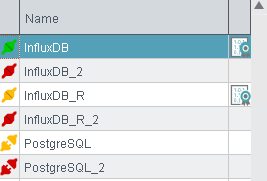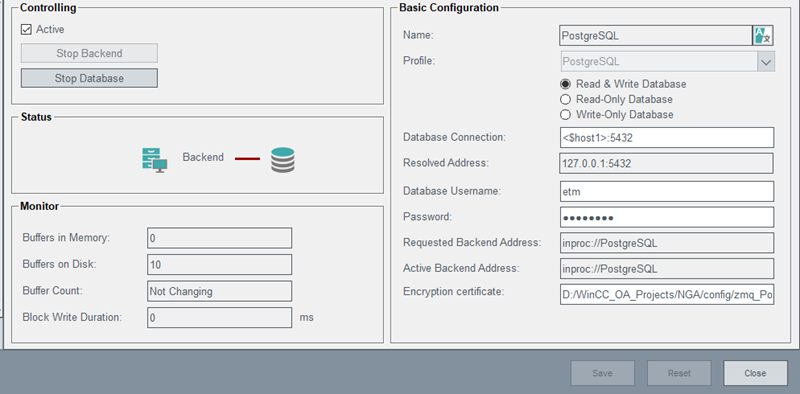Backend List
The Backend list view on the left shows the currently defined backends and the current state of the backend and the database by using different colors.
- Green means the backend is running and connected to the database without errors
- Yellow means the backend is started but there is no connection to the database
- Red means that the NGA manager is not running
Figure 1. Plugged-in Backends / Unplugged Backends 
The symbols on the left show the state of the backend Plugged-in or Unplugged.
- Plugged-In = The backend is active
- Unplugged = The backend is inactive
The symbol on the right  shows if a backend or archive groups are licensed or not:
shows if a backend or archive groups are licensed or not:
- If the frontend (NextGen Archiver manager) is not running (the state of the backend or the archive group is red, meaning not running), the license icon is not shown.
- If a backend is not active, the license symbol is not shown.
- If an archive group is not active or the associated backend is not active, the license symbol is not shown.
Note:When you activate a backend, the system checks if a license is available. If a free license is not found, a warning is shown and the backend cannot be activated.
For more information on the licensing, see chapter Licensing.
You can create new backends via the "+ " symbol and delete them via the "x". A backend has a default name (Backend1). The same naming and renaming rules as to Archive groups mentioned in this chapter apply. The DPs are called NGA_B_Backend1, NGA_B_Backend2 etc.


It consists of four parts:
- Controlling,
- Status and Monitor and
-
Basic Configuration)
for grouping the parameters into different areas.
For redundant projects for each backend a second “_2” backend is shown. This refers to the backend of the “right” redundant node (whereas the backend without “_2” to the backend on the “left” redundant node). All configuration changes will be applied to both backends automatically. The “_R” backends are shown when the database is not capable of redundancy on it’s own (such as e.g. InfluxDB®). It is not possible to control the database access of these backends.
Backends can only be deleted when no archive group is assigned to them. A standard backend for InfluxDB®, PostgreSQL® and MS SQL® is already included in WinCC OA . Note that to use the PostgreSQL® or MS SQL® backend, a PostgreSQL®/MS SQL® database must be installed. It is not part of the delivery of WinCC OA, see chapter NGA - PostgreSQL® Server Installation.



